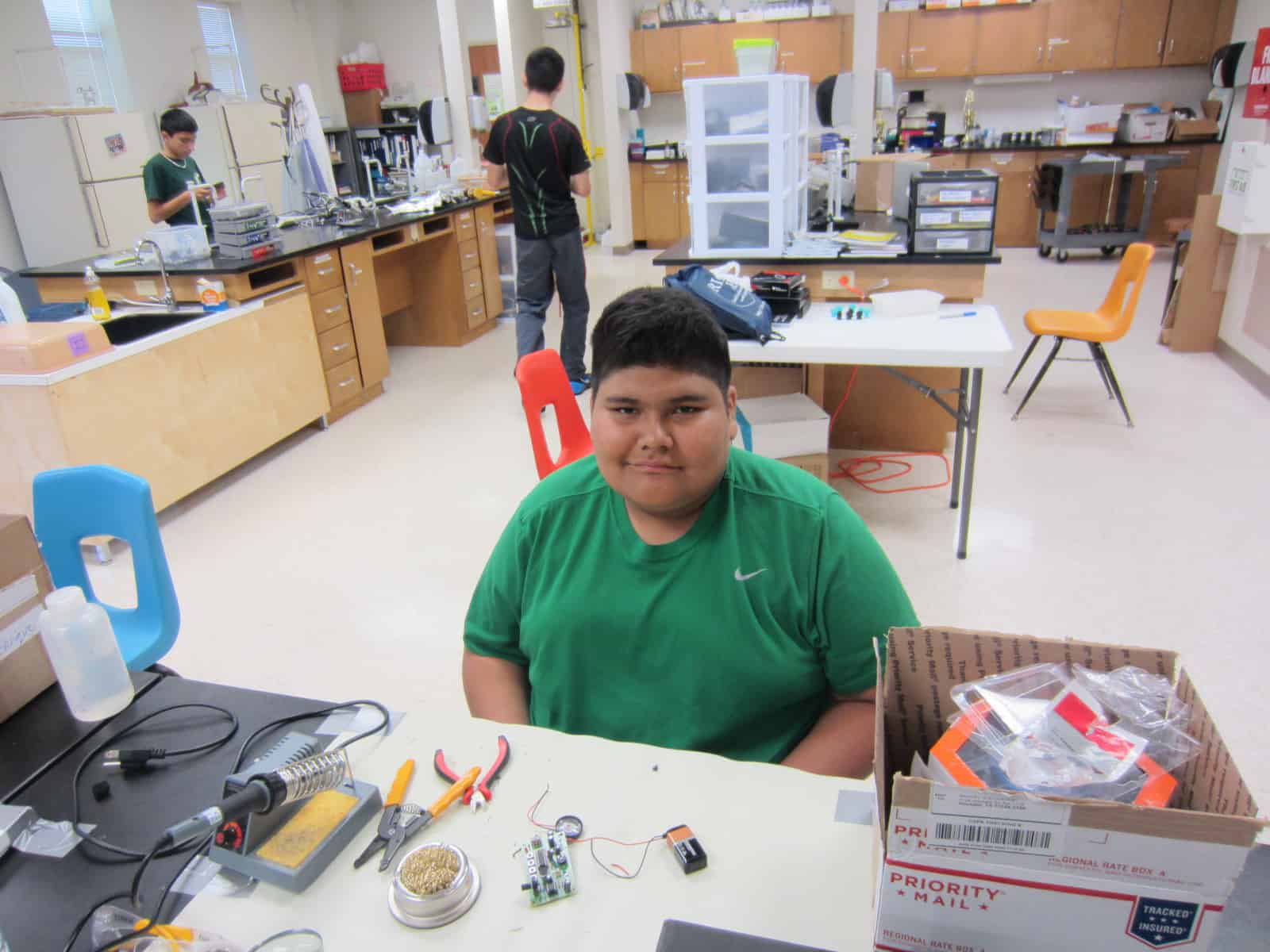Hi my name is Joshua. I am working on the robot spider project. I am new to making robots from scratch and I hope that I will learn a lot from this camp. 

Reflection/Conclusion
This project was very exciting and challenging for me at the same time. The programming part was probably the greatest challenge in this project because I had to keep going back to it so I could tweak the slightest thing so the program would work. None the ess I liked learning how to program because I only had experience with lego robots and how to program them. I am also happy that the robot is finished and unique and that it was made by me even when I am new to programming and building from scratch. I can se myself doing things like this in the future and improving on other stuff to. Completed Project I finally finished my project. My robot spider has taken the full 6 weeks to build and has experienced many problems during programing, building, and circuitry. It was very hard to figure out how to make the sensor keep going without sensing the line behind it. Then I attached an H-bridge which can make the motor go in both directions. so I could make the motor go back and forth in front of the robot. I then had to replace parts on the spider because the solder had burned through a resistor and I had to replace it. I then had problems making the battery because the circuit would not work so I changed out the battery power amount and it worked. The following video is the spider actually working. http://youtu.be/K8REeu17gjY?list=UUZbh9AgbYi1qzsfz9jPMsSA
Documentation
CAD
Hints/Tips
- The legs go up and down and this makes it harder for the sensor to detect a black line.
- Make something that supports the sensor when it slides when detecting.
- There is a slot that the Arduino fits into and it is the best space for it.
- Be careful when soldiering wires to the motors because if you heat up the wires for a long period of time they will melt.
Source Code
Bill of Materials
Second Milestone
Earlier I said that I would make the sensor control the motors of the spider. In preparation for that I made a small circuit with a dc motor and a sensor. the motor was not hard to program by itself, but with the sensor attached it was more challenging so I had to try over and over again until I got it right. What the circuit did was make the motor turn on when I put something in front of it like my finger, but it had to not be black. This video shows what it did.
First Milestone
Earlier this week I had no idea how to program an arduino. I decided to learn how to program it and decided that I was going to try and light up some LEDs. I had to learn the right code and make sure that there were no errors in it. I was able to make an led light up and blink. I then decided to make two LEDs light up at the same time and I read a short book on how to program the arduino. I figured out how to do it and I decided that it was time to try and make the sensor control the LEDs. I managed to do this by looking up examples and making sure there were no errors in the program and that everything was hooked up correctly. My plan for my main project is to do this on a bigger scale, but instead of LEDs I will use motors.
Starter Project
I finally finished my starter project because the new kit came in. I had fried the chip in my first kit so I had to wait for a new one. I had to solder all the components in the right place. It was a lot easier than the first time I tried to build because I had gotten better with the soldering iron. I was able to get it working, but there was still a lot of interference. I put a box in between the speaker and the actual board that the other components were with. After that the interference was gone and it worked perfectly. The following is the video for my starter project.





